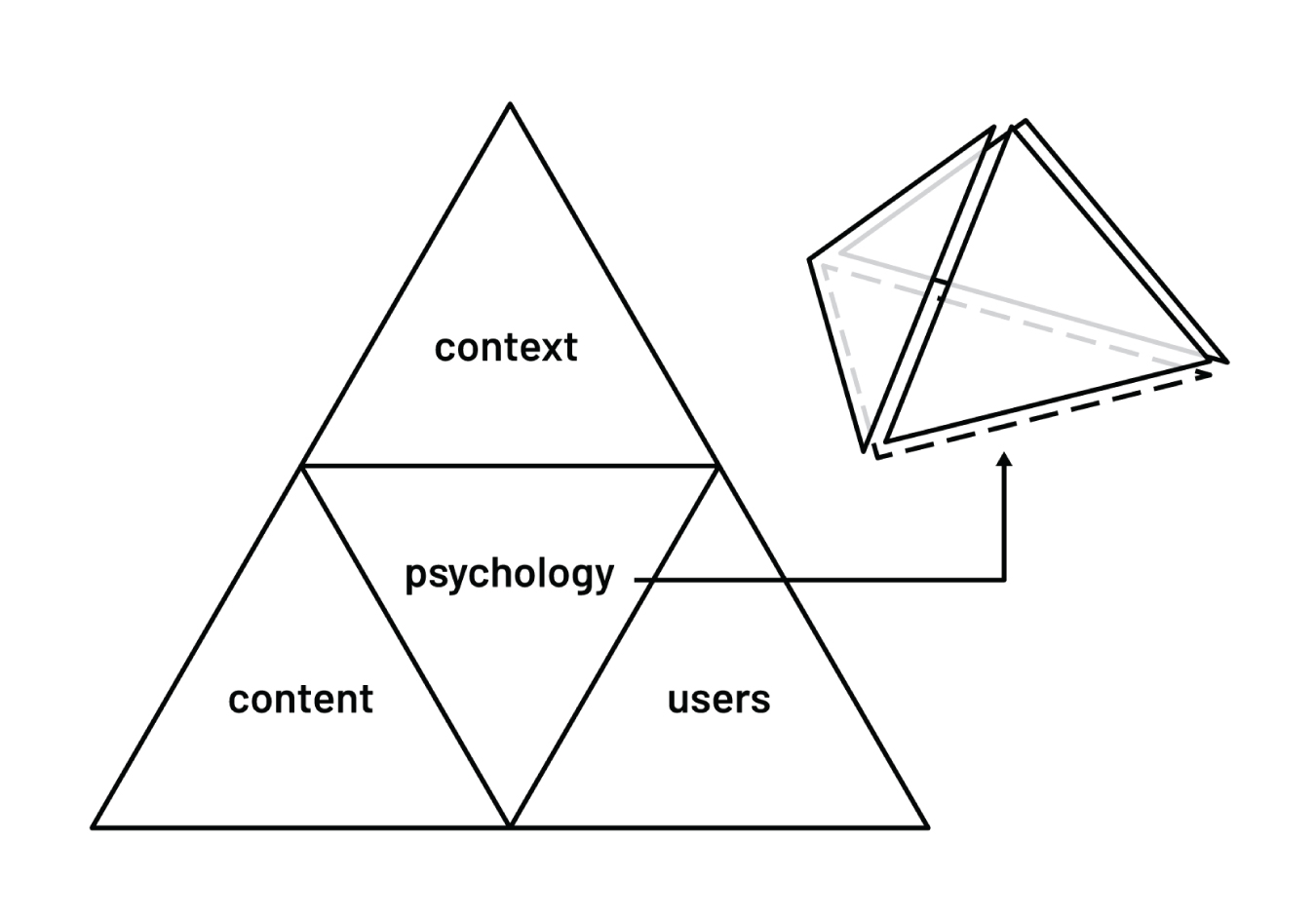The Burden of Proof is written as a letter to the next generation of digital designers, with the hope of opening their eyes to the dangers that we as designers unintentionally create for our users – despite the fact that we may never have direct proof of those efforts and results.
Downloadable PDF [ here. ]
Framework.
The underlying framework for my argument is based off of Peter Moreville’s early UX work, which has been commonly referred to as Moreville’s Pillars of UX, developed in the early 90’s while he worked at Google. My goal was to get back to the roots of UX design, see where it came from, how it was developed, and begin to question that development so we can start building from the ground up with the mental health of our users in mind.

Peter Moreville – an Information Architect who has worked for many of the big tech giants, and his original UX framework developed in the 90’s has been widely used as the basis for many current ux design processes.

Moreville + Psychology – My concept was to take Moreville’s original pillars of UX and overlay a fourth pillar, psychology, to show the need for understanding basic cognitive psychology principles as we create digital experiences

“Moreville’s Pyramid” – As I continued the body of research, I began to see this basic understanding of psychology as the base that supports the other pillars, so I reorganized the pillars into a pyramid, with psychology at the base.
Research.
The majority of my research, similar to my framework development, pulled from largely accepted understandings of human cognition. Looking at work from psychologists like Daniel Kahneman and Abraham Maslow, my hope was to draw connections between the way that we as humans inherently act and react to the world around us, and the way that we use our digital devices on a daily basis.

Maslow’s Hierarchy of Needs, represented through the classic pyramid shape, showing how humans progress up the levels one by one.

Daniel Kahneman’s representation of cognitive thinking, as embodied by his concept of System 1 and System 2 thinking.
Case Study: Social Media
The piece tying together The Burden of Proof is a case study looking at the way that social media platforms are affecting children and teens around the world, a body of work I’ve continued working on from my Senior Thesis project at the University of Utah. [ view the project ]
The purpose of talking about this issue specifically is that it’s an easy one to understand by the general public. Social media is now an institution in today’s world, one we really can’t escape, and despite the lack of direct proof from the scientific community–and the many conversations I’ve had with Psychologists like Dr. Neejra Van Zalk–people understand that it’s an issue that needs to be addressed, even if we can’t directly prove that it causes anything.
Social Media
The piece tying together The Burden of Proof is a case study looking at the way that social media platforms are affecting children and teens around the world, a body of work I’ve continued working on from my Senior Thesis project at the University of Utah. [ view the project ]
The purpose of talking about this issue specifically is that it’s an easy one to understand by the general public. Social media is now an institution in today’s world, one we really can’t escape, and despite the lack of direct proof from the scientific community–and the many conversations I’ve had with Psychologists like Dr. Neejra Van Zalk–people understand that it’s an issue that needs to be addressed, even if we can’t directly prove that it causes anything.